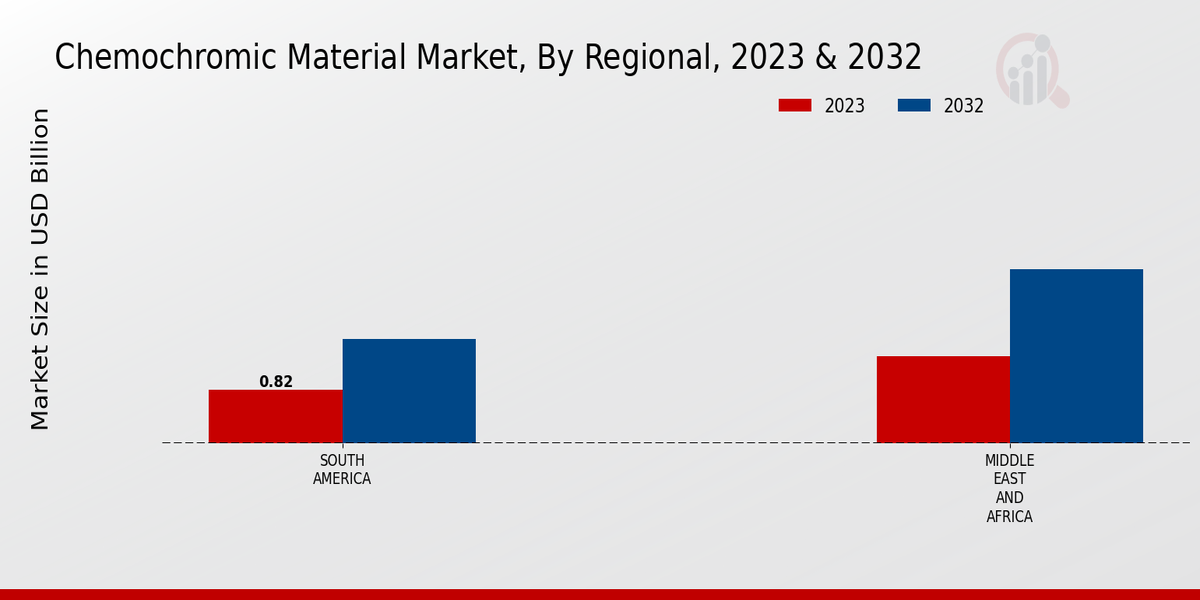Market Growth Projections
The Global Chemochromic Material Market Industry is poised for substantial growth, with projections indicating a market value of 5.84 USD Billion by 2035. This growth trajectory reflects the increasing adoption of chemochromic materials across various sectors, including consumer electronics, automotive, and packaging. The anticipated CAGR of 7.63% from 2025 to 2035 suggests a robust expansion phase, driven by innovations and advancements in material science. The market dynamics indicate a shift towards more sustainable and functional applications, positioning chemochromic materials as a key player in the future of smart technologies. The ongoing research and development efforts are likely to further enhance the market landscape.
Growth in Automotive Applications
The automotive sector plays a pivotal role in the Global Chemochromic Material Market Industry, as manufacturers seek innovative solutions to enhance vehicle aesthetics and functionality. Chemochromic materials are increasingly employed in automotive displays, interior lighting, and exterior coatings, allowing for dynamic color changes based on environmental conditions. This trend aligns with the broader shift towards smart vehicles, which are projected to drive the market's growth. The anticipated increase in market value to 5.84 USD Billion by 2035 underscores the potential of these materials in revolutionizing automotive design and user interaction. As the industry embraces advanced technologies, the demand for chemochromic materials is expected to rise.
Innovations in Textile Applications
Innovations in textile applications are significantly influencing the Global Chemochromic Material Market Industry. Chemochromic materials are being integrated into fabrics for clothing and upholstery, allowing for dynamic color changes based on temperature or light exposure. This technology not only enhances the aesthetic appeal of textiles but also offers functional benefits, such as temperature regulation. The growing interest in smart textiles, particularly in fashion and sportswear, suggests a robust market potential. As the industry evolves, the incorporation of these materials is likely to gain traction, contributing to the overall market growth and diversification of applications in the textile sector.
Rising Demand in Consumer Electronics
The Global Chemochromic Material Market Industry experiences a notable surge in demand driven by the increasing integration of smart materials in consumer electronics. Devices such as smartphones and wearables are increasingly utilizing chemochromic materials for features like color-changing displays and indicators. This trend is expected to contribute significantly to the market, with projections indicating a market value of 2.6 USD Billion in 2024. The incorporation of these materials enhances user experience and aesthetic appeal, thereby attracting manufacturers to invest in innovative applications. As consumer preferences evolve towards personalization and functionality, the adoption of chemochromic materials is likely to expand further.
Advancements in Smart Packaging Solutions
The Global Chemochromic Material Market Industry is witnessing a transformative shift due to advancements in smart packaging solutions. Chemochromic materials are increasingly utilized in food and pharmaceutical packaging to indicate freshness and safety. This application not only enhances consumer confidence but also aids in reducing food waste and ensuring product integrity. As sustainability becomes a focal point for manufacturers, the adoption of these materials is likely to grow. The market's expansion is supported by a projected CAGR of 7.63% from 2025 to 2035, reflecting the increasing recognition of the importance of smart packaging in various sectors. This trend indicates a promising future for chemochromic materials in packaging.
Regulatory Support for Advanced Materials
Regulatory support for advanced materials is emerging as a crucial driver in the Global Chemochromic Material Market Industry. Governments worldwide are increasingly recognizing the potential of smart materials, including chemochromic substances, in promoting sustainability and innovation. Initiatives aimed at fostering research and development in this field are likely to enhance market growth. As regulations evolve to support the use of advanced materials in various applications, the market is expected to benefit from increased funding and collaboration between public and private sectors. This supportive environment may facilitate the introduction of new products and technologies, further driving the adoption of chemochromic materials across industries.
















Leave a Comment